Australian Tropical Rainforest Plants - Online edition
Endiandra palmerstonii (F.M.Bailey) C.T.White & W.D.Francis
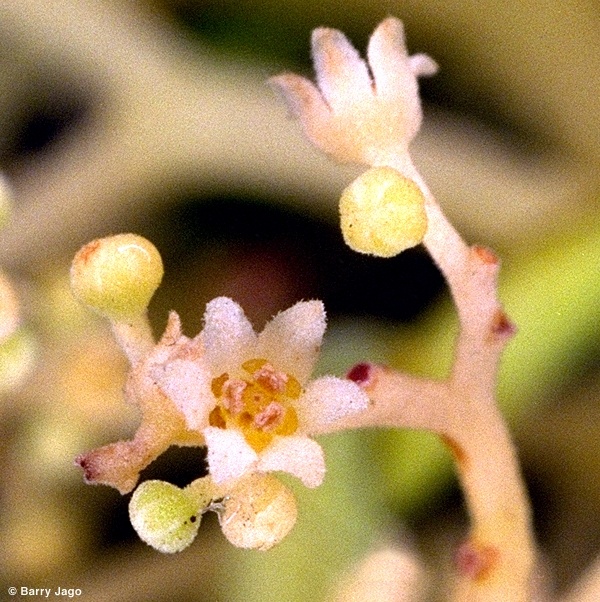
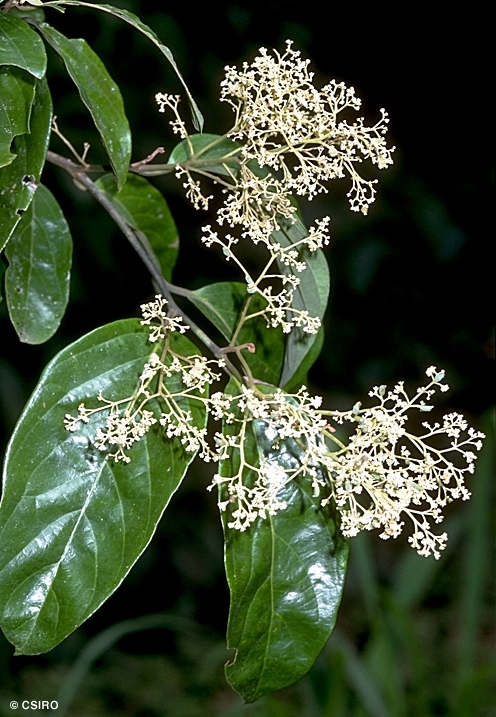

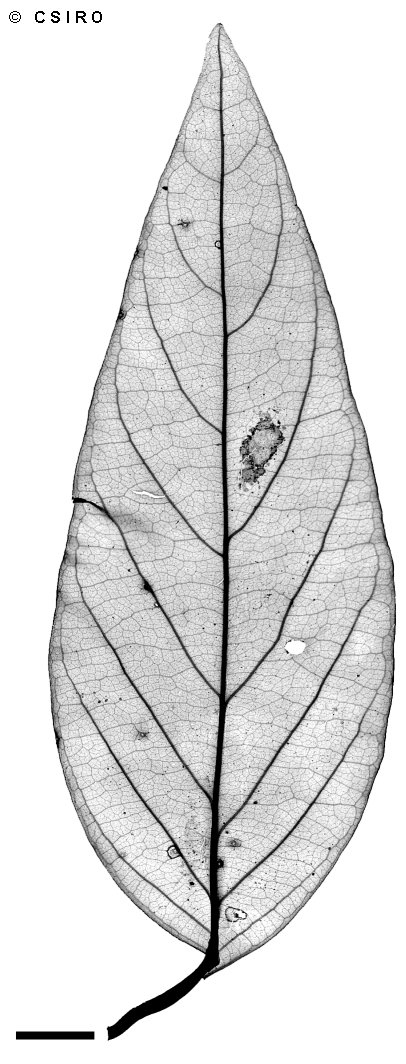
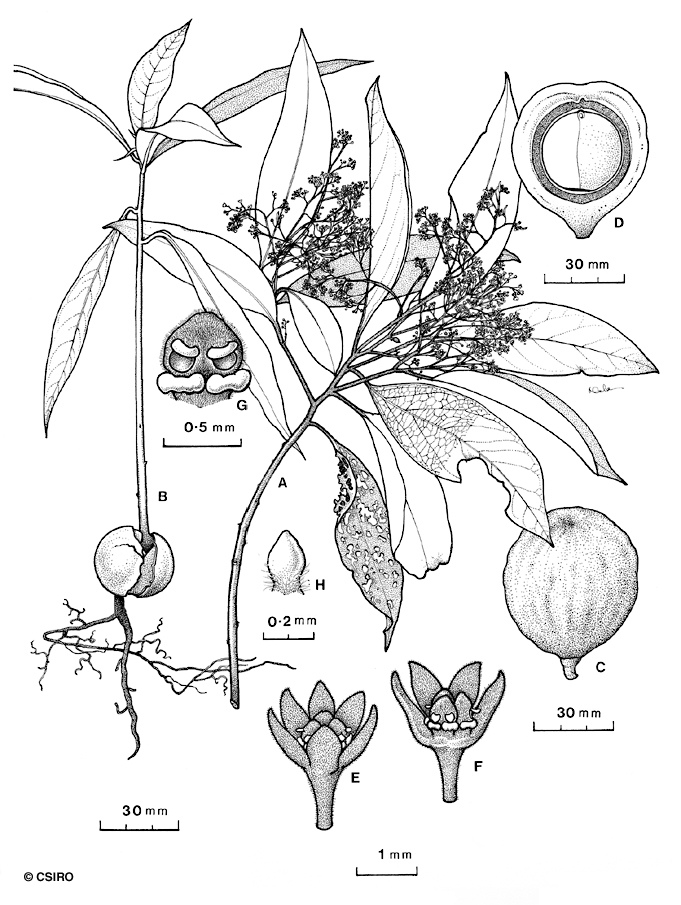
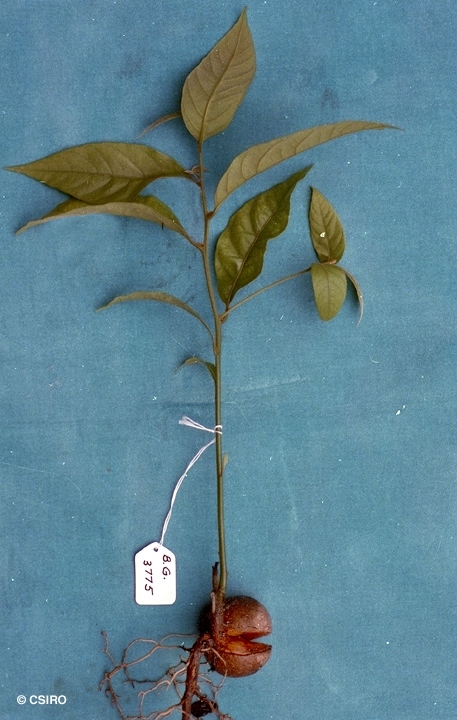

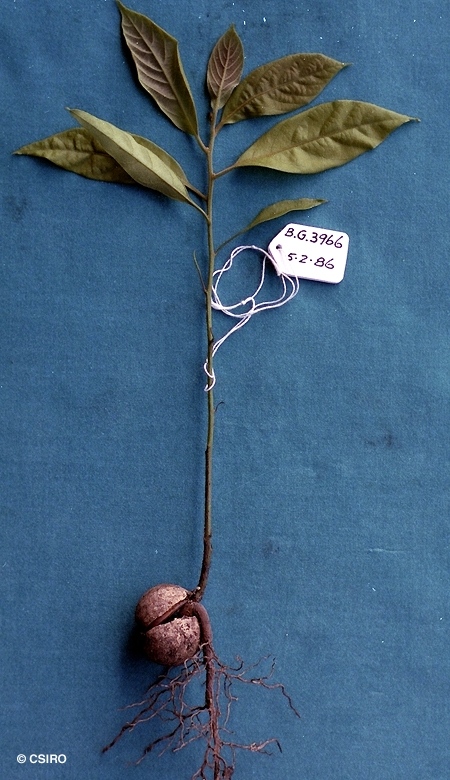
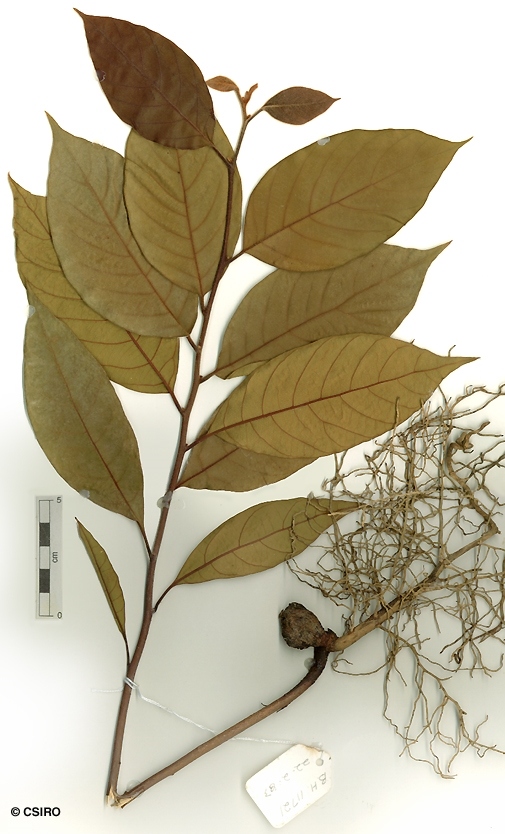
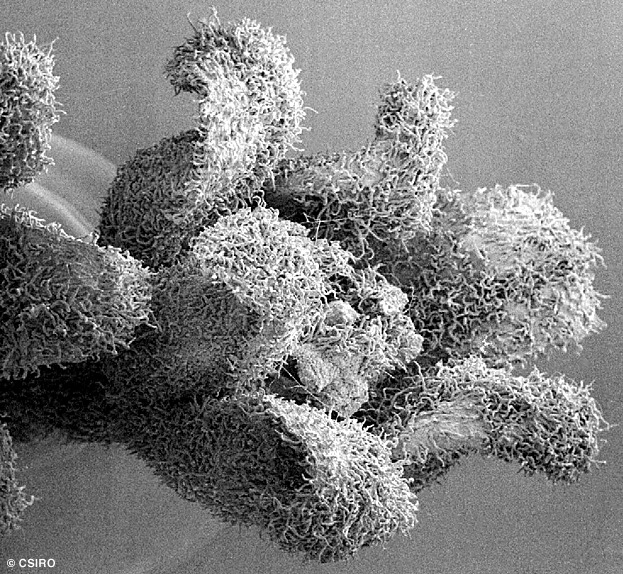
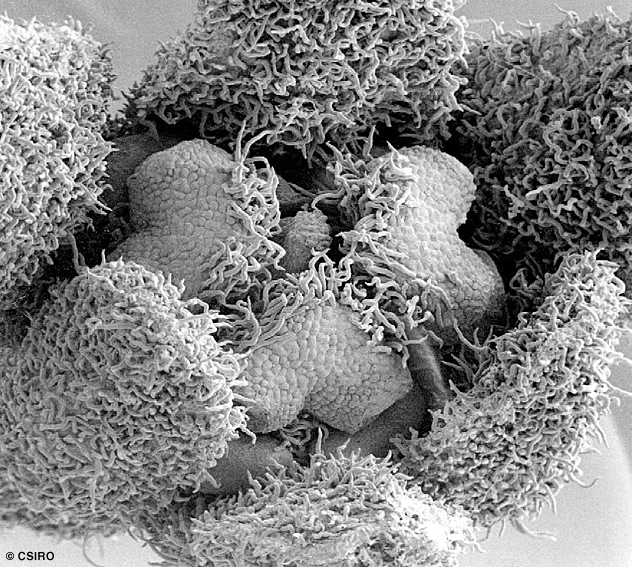
White, C.T. & Francis, W.D. (1920) Queensland Department of Agriculture and Stock. Botany Bulletin 22: 36.
Walnut, Australian; Walnut, Black; Walnut Bean; Bean, Walnut; Black Nut; Black Walnut; Orientalwood; Queensland Walnut; Walnut, Queensland; Australian Walnut
A thin cream or pale brown layer normally visible under the subrhytidome layer before the first section of the outer blaze. A black, odorous, stained section of bark usually visible on large trees particularly if they have been wounded at some time in the past.
Twigs fluted, clothed in tortuous, erect, pale brown hairs. Leaf blades about 7-22 x 2.5-13 cm, green or slightly glaucous on the underside, clothed in short, tortuous, erect, white or pale brown hairs. If the underside is held up to the light and the hairs viewed at a low oblique angle the hairs may appear to be mauve in colour. Midrib +/- flush with the upper surface. Petioles flat or channelled on the upper surface. Oil dots visible with a lens.
Fruits globular, usually showing some longitudinal ribs, about 45-60 x 45-65 mm. Seed about 30-40 x 30-45 mm. Cotyledons cream, pinkish cream or apricot. Rat-eaten remains of the hard seed shells (endocarps) usually present under large trees. Each shell may have one projection on the surface.
First pair of true eaves narrowly elliptic or lanceolate, about 75-140 x 18-38 mm, with a long acute apex, green on the underside. Usually 1-3 narrow leaf-like cataphylls present before the leaves. At the tenth leaf stage: leaves with pale brown hairs on the upper surface, more numerous along the midrib and lateral veins; oil dots small, numerous, visible with a lens. Seed germination time 125 to 543 days.
This species produces a decorative and highly valued cabinet timber suitable for furniture manufacture either as solid timber or as veneer. The timber is good for carving with hand tools but is rather abrasive on machine tools. Has high electrical insulating properties. Makes good knife handles. Swain (1928).
Seeds were used as food by aborigines but only after processing involving leaching in water.
This species produces millable logs and the timber is marketed as Queensland Walnut. Wood specific gravity 0.69-0.81. Hyland (1989).





